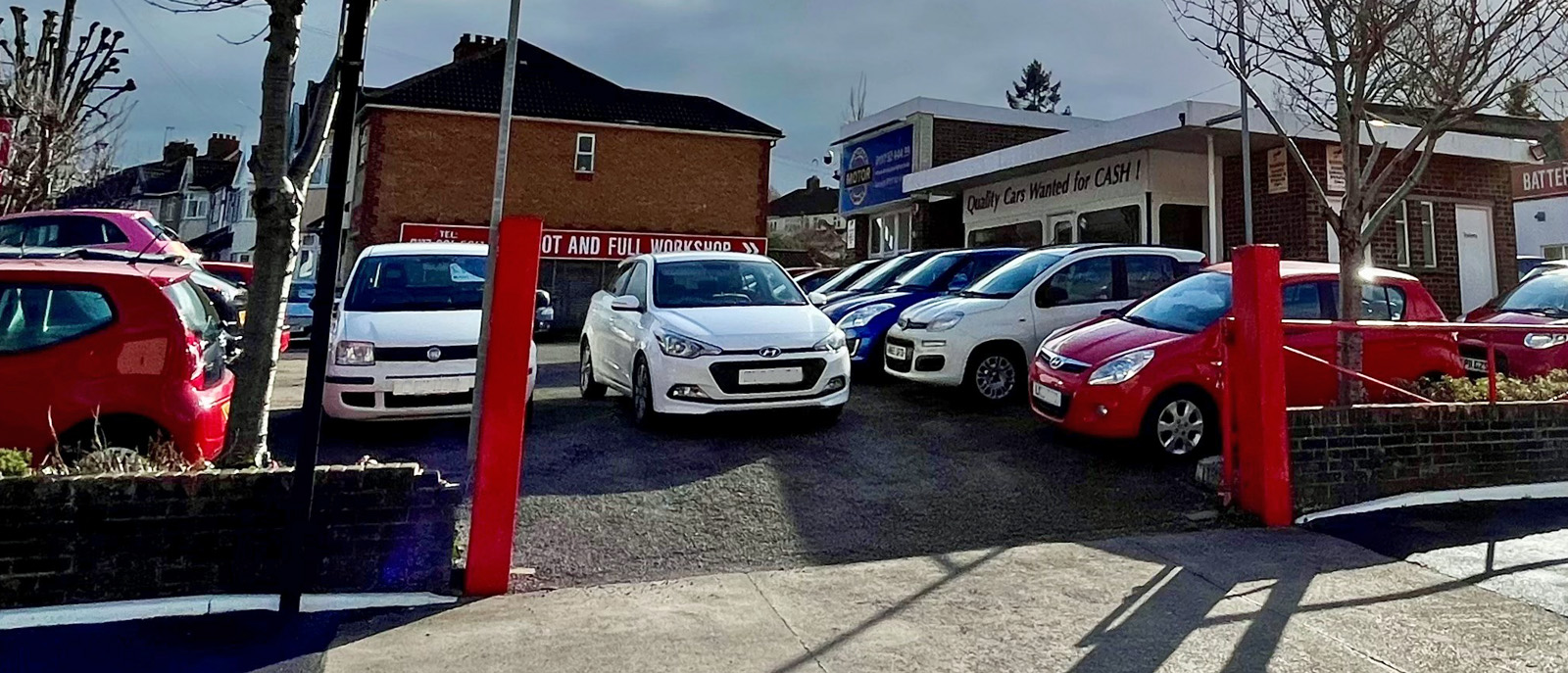 Prices of used fully electric cars (EVs) are falling in the UK, even though prices of used internal combustion engine (ICE) cars are rising. According to Auto Trader (see the first two articles below), in February 2023 the average price of used petrol cars rose by 3.3% compared with January and the price of used diesel cars rose by 1.4%. But the price of used EVs fell by 9.1%. This follows a fall of 2.1% in January.
Prices of used fully electric cars (EVs) are falling in the UK, even though prices of used internal combustion engine (ICE) cars are rising. According to Auto Trader (see the first two articles below), in February 2023 the average price of used petrol cars rose by 3.3% compared with January and the price of used diesel cars rose by 1.4%. But the price of used EVs fell by 9.1%. This follows a fall of 2.1% in January.
But why are used EV prices falling? After all, the last few years has seen a drive to replace ICEs with EVs and hybrids, with many consumers preferring electric cars to petrol and diesel ones. What is more, vehicle excise duty is currently zero for EVs (and will be until 2025) and the sale of new ICEs will be banned from the end of the decade. The answer lies in demand and supply.
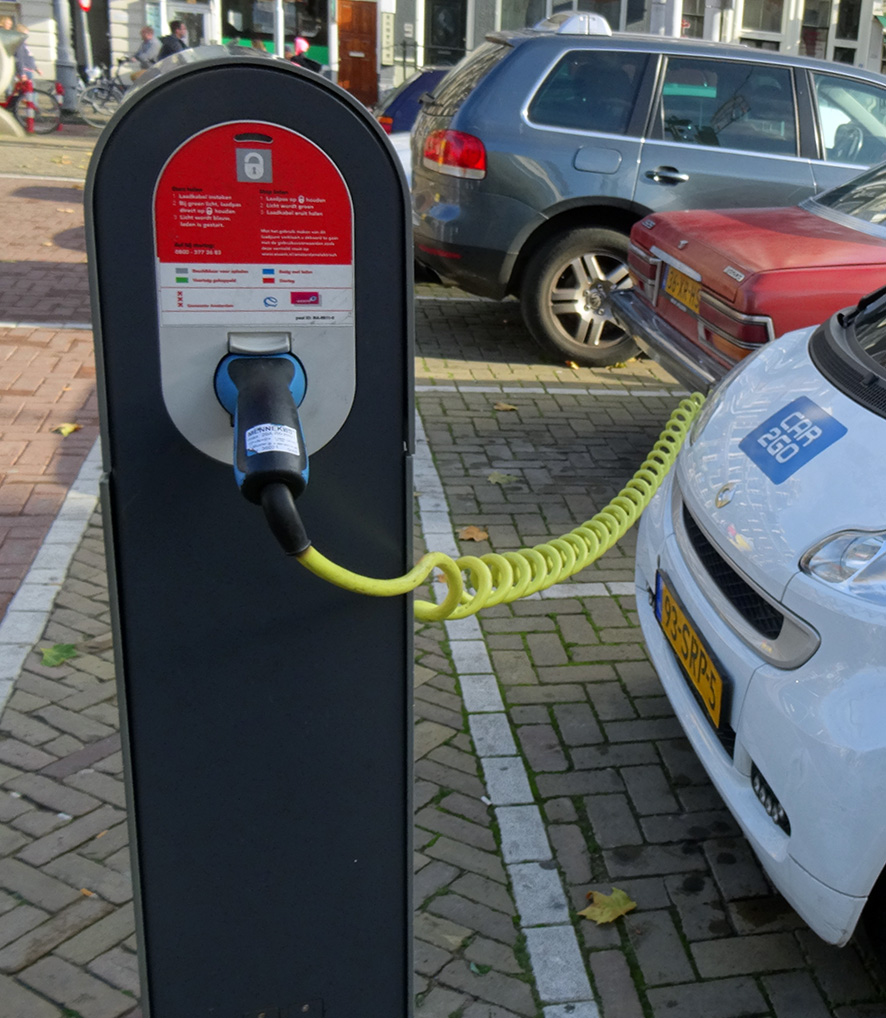 On the demand side, many existing and potential EV owners worry about the charging infrastructure. The number of EVs has grown more rapidly than the number of charging points. In 2020 there was one charging point per 16 cars; by 2022 this had worsened to one per 30 cars. Also the distribution of charging points is patchy and there is a lack of rapid and ultra-rapid chargers. Increasingly, people have to queue for access to a charger and this can substantially delay a journey and could mean missed appointments. There were many pictures in the media around Christmas of long queues for chargers at service stations and supermarkets. Poor charging infrastructure can be more of a problem for second-hand EVs, which tend to have a smaller range.
On the demand side, many existing and potential EV owners worry about the charging infrastructure. The number of EVs has grown more rapidly than the number of charging points. In 2020 there was one charging point per 16 cars; by 2022 this had worsened to one per 30 cars. Also the distribution of charging points is patchy and there is a lack of rapid and ultra-rapid chargers. Increasingly, people have to queue for access to a charger and this can substantially delay a journey and could mean missed appointments. There were many pictures in the media around Christmas of long queues for chargers at service stations and supermarkets. Poor charging infrastructure can be more of a problem for second-hand EVs, which tend to have a smaller range.
Also on the demand side is the price of fuel. After the Russian invasion of Ukraine and the rise in oil prices, the price of petrol and diesel soared. This increased the cost of running ICE vehicles and boosted the demand for EVs. But the war also drove up the price of natural gas and this price largely determines the wholesale price of electricity. With government subsidies for electricity, this constrained the rise in electricity prices. This made running an EV for a time comparatively cheaper. 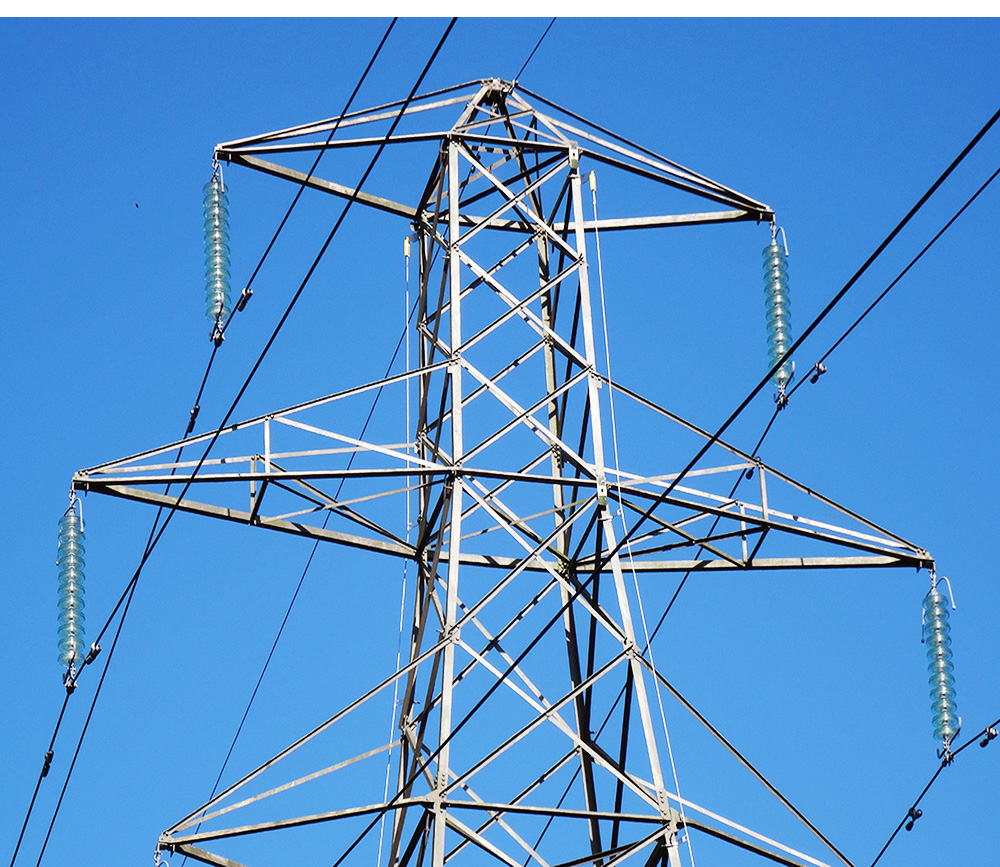 More recently, the price of oil has fallen and with it the price of petrol and diesel. But electricity prices are set to rise in April as government subsidies cease. The cost advantage of running an electric car is likely to disappear, or at least substantially decline.
More recently, the price of oil has fallen and with it the price of petrol and diesel. But electricity prices are set to rise in April as government subsidies cease. The cost advantage of running an electric car is likely to disappear, or at least substantially decline.
Another substitute for second-hand EVs is new EVs. As the range of new EVs increases, then anyone thinking about buying an EV may be more tempted to buy a new one rather than a used one. Such demand has also been driven by Tesla’s decision to cut the UK prices of many of it models by between 10% and 13%.
The fall in demand for used EVs is compounded, at least in the short term, by speculation. People thinking of trading in their ICE or hybrid car for a fully electric one are likely to wait if they see prices falling. Why buy now if, by waiting, you could get the same model cheaper?
On the supply side, EV owners, faced with the infrastructure problems outlined above, are likely to sell their EV and buy an ICE or hybrid one instead. This increases the supply of used EVs. This is again compounded by speculation as people thinking of selling their EV do so as quickly as possible before price falls further.
In many other countries, there is much more rapid investment in charging infrastructure and/or subsidies for purchasing not only new but used EVs. This has prevented or limited the fall in price of used EVs.
Articles
- Auto Trader diagnoses used car sector’s ‘robust health’ after February value rise
AM-online, Tom Sharpe (20/2/23)
- Auto Trader: Used car prices UP AGAIN in February but EV prices continue to tumble
Car Dealer, James Baggott (20/2/23)
- Used electric car prices caught in vicious downward cycle as experts warn of trouble ahead
Car Dealer, James Baggott (13/2/23)
- Used EV market needs more support in Spring Budget, says Vehicle Remarketing Association
Car Dealer, Jack Williams (15/2/23)
- Middle classes cannot afford electric cars, warns Vauxhall owner
The Telegraph, Howard Mustoe (23/2/23)
- British drivers are hurtling towards the electric car cliff edge
The Telegraph on msn, Ben Marlow (23/2/23)
- Cars Drivers should be ‘cautious’ when buying a used EV before 2030 car ban – ‘still an issue!’
Express, Felix Reeves (12/2/23)
- Motorpoint revenues accelerate but dealership group issues profit warning as used electric car prices crash
This is Money, Camilla Canocchi (27/1/23)
- Tesla cuts prices by up to a fifth to boost demand
BBC News, Lucy Hooker (13/1/23)
Questions
- Draw a supply and demand diagram to illustrate what has been happening in the market for used EVs.
- How has the price elasticity of (a) demand and (b) supply affected the amount by which used EV prices have fallen?
- Identify substitutes and complements for used electric vehicles. How relevant is the cross-price elasticity of demand for these complements and substitutes in determining price changes of used EVs?
- Draw a diagram to illustrate the effect of speculation on used EV prices.
- What is likely to happen to used EV prices in the months ahead? Explain.
- How are externalities in car usage relevant to government action to influence the market for EVs? What should determine the size of this intervention?
- Devise a short survey for people thinking of buying an EV to determine the factors that are likely to affect their decision to buy one and, if so, whether to buy a new or used one.
 Throughout the pandemic, the fight against COVID-19 has often been framed in terms of striking a balance between the health of the public and the health of the economy. This leads to the assumption that a trade-off must exist between these two objectives. Countries, therefore, have to decide between lives and livelihoods. However, one year on since lockdowns swept the globe the evidence suggests that the trade-off between sacrificing lives and sacrificing the economy is not necessarily clear cut.
Throughout the pandemic, the fight against COVID-19 has often been framed in terms of striking a balance between the health of the public and the health of the economy. This leads to the assumption that a trade-off must exist between these two objectives. Countries, therefore, have to decide between lives and livelihoods. However, one year on since lockdowns swept the globe the evidence suggests that the trade-off between sacrificing lives and sacrificing the economy is not necessarily clear cut.
Controlling the virus
Restrictions such as social distancing and lockdowns were introduced in order to minimise the spread of the virus, prevent hospitals from being overwhelmed, and ultimately save lives. However, as these measures are put in place, schools were closed, businesses and factories stopped operating, and economic activity shrank. This would suggest therefore, that society inevitably faces a trade-off between lost lives versus lost livelihoods.
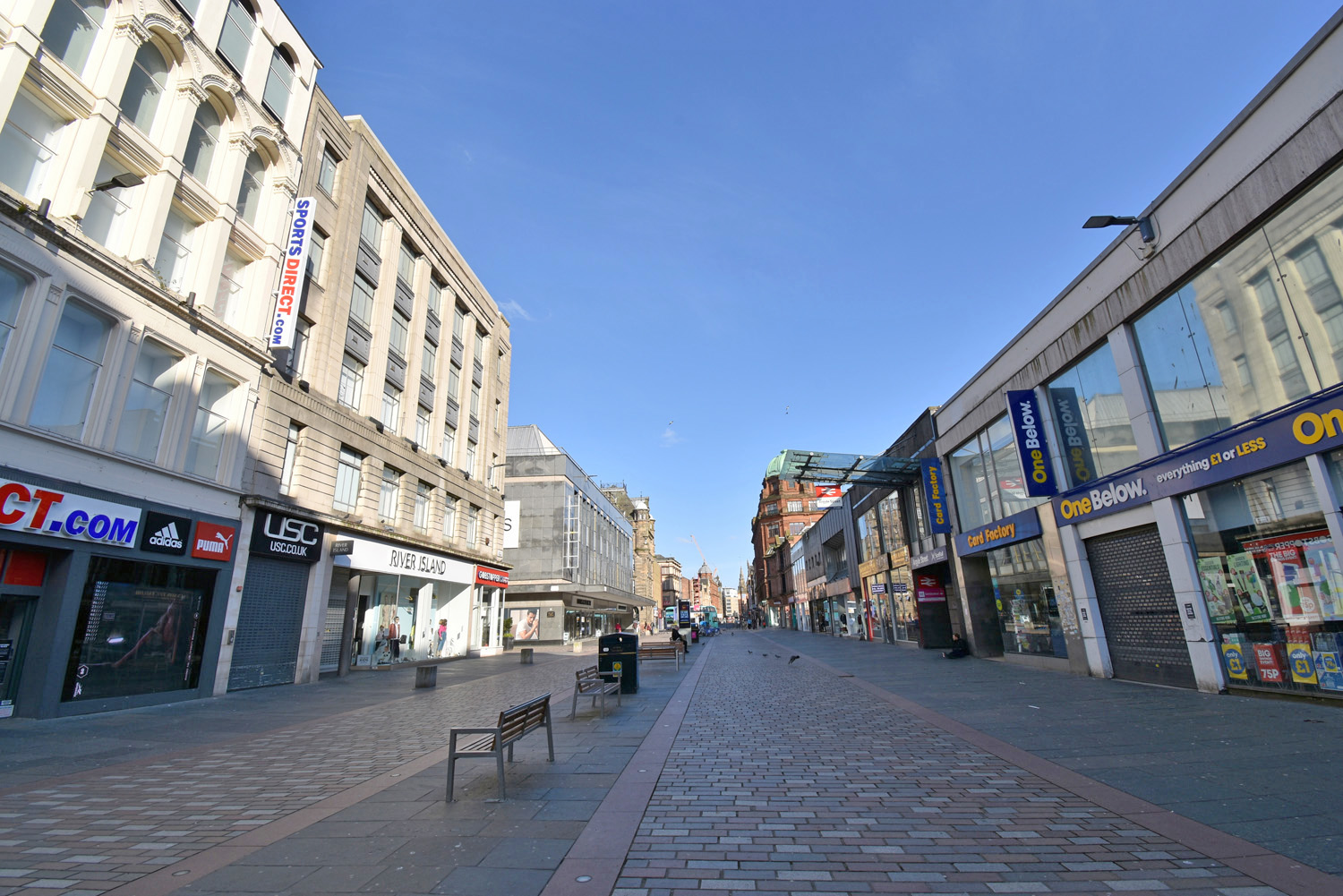 It could be argued, therefore, that in the short run these interventions create a ‘health–wealth trade-off’. The lockdown restrictions save lives by preventing transmission, but they came at the cost of lost output, income and therefore GDP. This would also imply that the trade-off works in reverse when the lockdown restrictions are eased. As measures are relaxed, the economy can begin to recover but at the cost of an increased threat of the virus spreading again.
It could be argued, therefore, that in the short run these interventions create a ‘health–wealth trade-off’. The lockdown restrictions save lives by preventing transmission, but they came at the cost of lost output, income and therefore GDP. This would also imply that the trade-off works in reverse when the lockdown restrictions are eased. As measures are relaxed, the economy can begin to recover but at the cost of an increased threat of the virus spreading again.
What are the costs?
In order to work out if a trade-off exists and what costs are involved, there must be a monetary value placed on human life. While this may seem unethical, governments, civil courts, regulatory bodies and companies do it all the time. The very existence of the life insurance industry is testament to the fact that human lives can be measured in monetary terms. One approach to measuring valuing life, commonly used by economists who conduct cost-benefit analyses, is the ‘value of statistical life’. It measures the loss or gain that arises from changes in the incidence of death, by eliciting people’s willingness to pay for small reductions in the probability of death, or their willingness to accept compensation in exchange for tolerating a small increase in the chance of death. (see the blog Lockdown – again. Is it worth it?)
Take the example of a complete lockdown. The potential number of lives saved can be estimated based on infection and fatality rates estimated from epidemiological models. This can then be multiplied by value of statistical life to compute the monetary value of saved lives. If this number exceeds the economic costs of a complete lockdown, then we know that it is desirable.
The trade-off between lost lives versus the economy is often erroneously viewed as an all-or-nothing choice between complete lockdown versus zero restrictions. However, in reality, there is a continuum in stringency of restrictions and it is not an all-or-nothing comparison.
Death rates vs downturns
In order to explore the existence of this trade-off, we can compare the health and economic impacts of the pandemic in different countries. If such a trade-off exists, then countries with lower death rates should have experienced larger economic downturns. However, when comparing the COVID-19 death rates with GDP data, the result is the opposite: countries that have managed to protect their population’s health in the pandemic have generally also protected their economy too. This suggests that there was never a simple binary trade-off between the two factors. Those countries that experienced the biggest first wave of excess deaths, also had the biggest hits to the economy.
 The UK was the hardest hit of similar countries on both measures within the G7 group of industrialised countries. The shape of the recession in the UK from the pandemic and lockdowns was extraordinary and historic. However, it was also unique as there was a very sharp fall followed by a rapid rebound. Over 2020, GDP saw the largest hit in three centuries; larger than any single year of the Great Wars or the 1920s Depression.
The UK was the hardest hit of similar countries on both measures within the G7 group of industrialised countries. The shape of the recession in the UK from the pandemic and lockdowns was extraordinary and historic. However, it was also unique as there was a very sharp fall followed by a rapid rebound. Over 2020, GDP saw the largest hit in three centuries; larger than any single year of the Great Wars or the 1920s Depression.
Studies of the declines in GDP contradict the idea of a trade-off, showing that countries that suffered the most severe economic downturns, such as Peru, Spain and the UK, were generally among the countries with the highest COVID-19 death rates. There are countries that have experienced the reverse too; Taiwan, South Korea, and Lithuania all experienced modest declines in economic output but have also managed to keep the death rate low.
It should also be noted that some countries that had similar falls in GDP experienced very different death rates from each other. When comparing the USA and Sweden with Denmark and Poland, they all saw similar declines in the economy with contractions of around 8–9%. However, the USA and Sweden recorded 5–10 times more deaths per million. This therefore suggests that there is no clear trade-off between the health of the population and the health of the economy.
There will be many different factors that impact on the death rate for each individual country and by how much the economy has been affected. Such factors will even go beyond the policy decisions that have been made throughout the pandemic about how best to suppress the transmission of the virus. However, from the data available, there is no clear evidence to suggest that a trade-off between the health and the economy exists. If anything, it suggests that the relationship works in the opposite direction.
Save the economy by saving lives
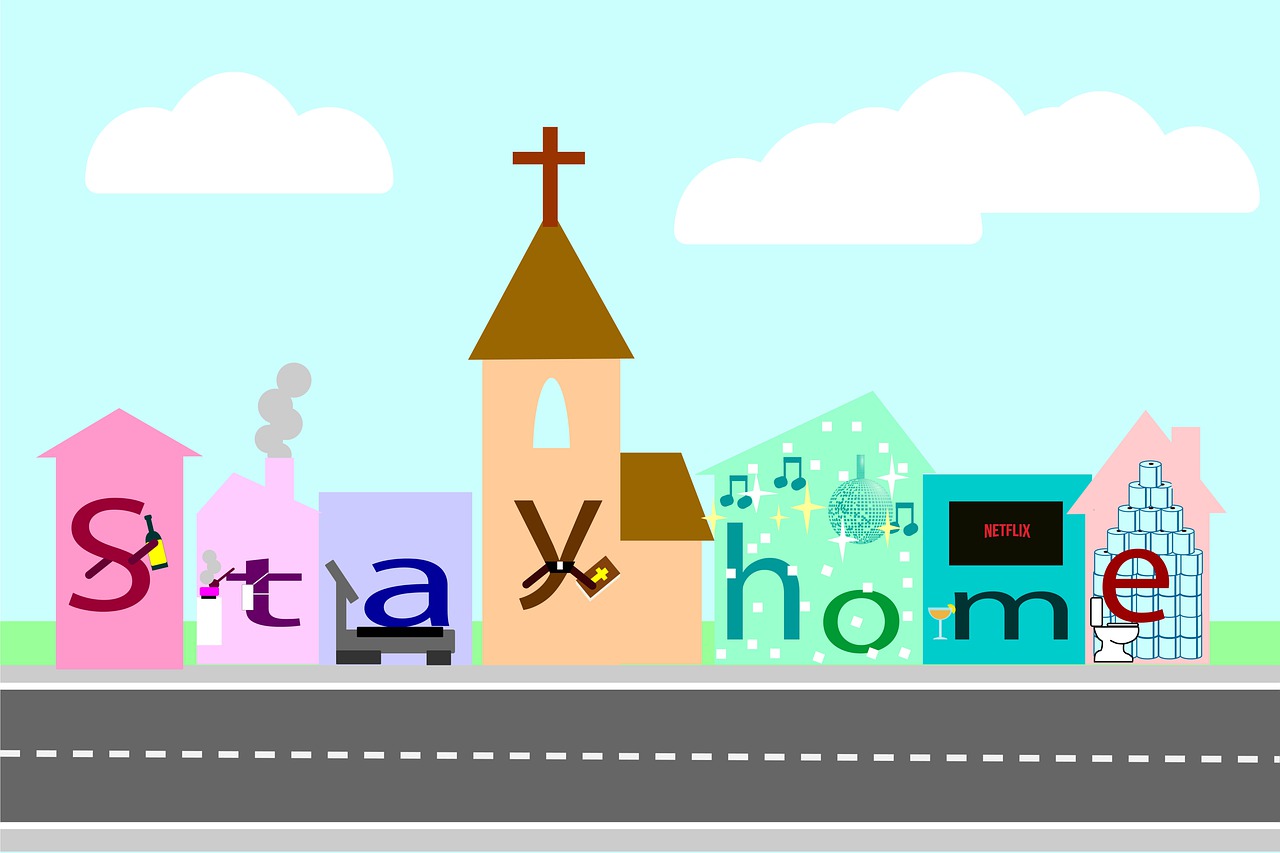 Given the arguments against the existence of the trade-off, it could be argued that in order to limit the economic damage caused by the pandemic, the focus needs to start and end with controlling the spread of the virus. Experiments that have been conducted across the world definitively show that no country can prevent the economic damage without first addressing the pandemic that causes it. Those countries that acted swiftly in implementing harsh measures to control the virus, are now reopening in stages and their economies are growing. Countries such as China, Australia, New Zealand, Iceland, and Singapore, which all invested primarily in swift coronavirus suppression, have effectively eliminated the virus and are seeing their economies begin to grow again.
Given the arguments against the existence of the trade-off, it could be argued that in order to limit the economic damage caused by the pandemic, the focus needs to start and end with controlling the spread of the virus. Experiments that have been conducted across the world definitively show that no country can prevent the economic damage without first addressing the pandemic that causes it. Those countries that acted swiftly in implementing harsh measures to control the virus, are now reopening in stages and their economies are growing. Countries such as China, Australia, New Zealand, Iceland, and Singapore, which all invested primarily in swift coronavirus suppression, have effectively eliminated the virus and are seeing their economies begin to grow again.
China, in particular, stands out amongst this group of countries. The Chinese authorities acted very quickly, and firmly, but also the levels of compliance of the population have been very high. However, it could be argued that few countries possess the infrastructure that exists in China to facilitate such high compliance. The fact that the lockdown in China was so effective reduced both losses to the economy and the need for stimulus measures. China is also one of the few countries that have achieved a “V-shaped” recovery. Countries such as Korea, Norway and Finland also appear to have responded relatively well.
Most of the countries that prioritised supporting their economies and resisted, limited, or prematurely curtailed interventions to control the pandemic faced runaway rates of infection and further national lockdowns. The examples of the UK, the USA and Brazil are often quoted, with many arguing that these countries responded too late and too haphazardly. Both have experienced high numbers of deaths.
Conclusion
Discussions around the responses to the pandemic and what appropriate action should be taken have predominately been about how countries can strike the balance between protecting people’s health and protecting the economy. However, from observing the GDP data available there is no clear evidence of a definitive trade-off; rather the relationship between the health and economic impacts of the pandemic goes in the opposite direction. As well as saving lives, countries controlling the outbreak effectively may have adopted the best economic strategy too. It is important to recognise that many factors have affected the death rate and the impact on the economy, and the full impacts of the pandemic are yet to be seen. However, it is by no means clear that the trade-off between greater emphasis on sacrificing lives or sacrificing the economy is as real as has been suggested. If such a trade-off does exist, it is, at best, a weak one.
Articles
- In a pandemic it isn’t a case of health v wealth
BBC News, Faisal Islam (17/3/21)
- To Save the Economy, Save People First
Institute for New Economics Thinking, Phillip Alvelda, Thomas Ferguson, and John C. Mallery (18/11/20)
- Covid-19: Is there a trade-off between economic damage and loss of life?
LSE Blogs, Bernard H Casey (18/12/20)
- The COVID-19 dilemma: Public health versus the economy
Asian Development Bank Blogs, Euston Quah, Eik Leong Swee and Donghyun Park (24/11/20)
- Valuating health vs wealth: The effect of information and how this matters for COVID-19 policymaking
VOXEU, Shaun P. Hargreaves Heap, Christel Koop, Konstantinos Matakos, Asli Unan, Nina Weber (6/6/20)
- Which countries have protected both health and the economy in the pandemic?
Our World in Data, Joe Hasell (1/9/20)
Questions
- Define and explain the difference between a substitute and complementary good.
- Using your answer to question 1, describe the existence of a trade-off.
- Discuss the reasons why the trade-off between health and the economy would work in the opposite direction.
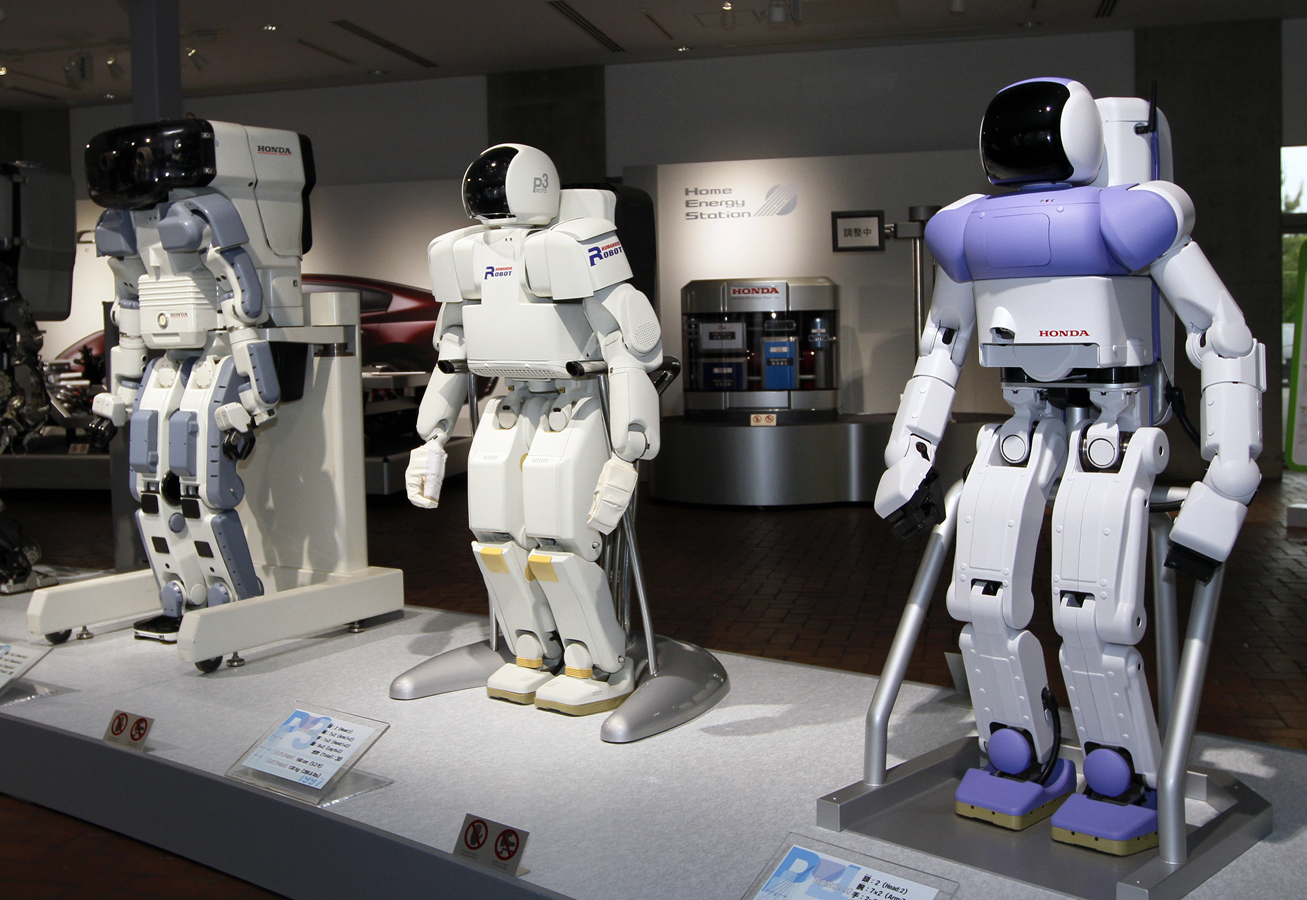 It’s been a while since I last blogged about labour markets and, in particular, about the effect of automation on wages and employment. My most recent post on this topic was on the 14th of April 2018 and it was mostly a reflection on some interesting findings that had been reported by Acemoglu et al (2017). More specifically, Acemoglu and Restrepo (2017) developed a theoretical framework to evaluate the effect of AI on employment and wages. They concluded that the effect was negative and potentially sizeable (for a more detailed discussion see my blog).
It’s been a while since I last blogged about labour markets and, in particular, about the effect of automation on wages and employment. My most recent post on this topic was on the 14th of April 2018 and it was mostly a reflection on some interesting findings that had been reported by Acemoglu et al (2017). More specifically, Acemoglu and Restrepo (2017) developed a theoretical framework to evaluate the effect of AI on employment and wages. They concluded that the effect was negative and potentially sizeable (for a more detailed discussion see my blog).
Using a model in which robots compete against human labor in the production of different tasks, we show that robots may reduce employment and wages … According to our estimates, one more robot per thousand workers reduces the employment to population ratio by about 0.18–0.34 percentage points and wages by 0.25–0.5 percent.
Since then, I have seen a constant stream of news on my news feed about the development of ever more advanced industrial robots and artificial intelligence. And this was not because of some spooky coincidence (or worse). It has been merely a reflection of the speed at which technology has been progressing in this field.
There are now robots that can run, jump, hold conversations with humans, do gymnastics (and even sweat for it!) and more. It is really impressive how fast change has been happening recently in this field – and, unsurprisingly, it has stimulated the interest of labour economists!
A paper that has recently come to my attention on this subject is by Graetz and Michaels (2018). The authors put together a panel dataset on robot adoption within seventeen countries from 1993 to 2007 and use advanced econometric techniques to evaluate the effect of these technologies on employment and productivity growth. Their analysis focuses exclusively on developed economies (due to data limitations, as they explain) – but their results are nevertheless intriguing:
We study here for the first time the relationship between industrial robots and economic outcomes across much of the developed world. Using a panel of industries in seventeen countries from 1993 to 2007, we find that increased use of industrial robots is associated with increases in labor productivity. We find that the contribution of increased use of robots to productivity growth is substantial and calculate using conservative estimates that it comes to 0.36 percentage points, accounting for 15% of the aggregate economy-wide productivity growth.
The pattern that we document is robust to including various controls for country trends and changes in the composition of labor and other capital inputs. We also find that robot densification is associated with increases in both total factor productivity and wages, and reductions in output prices. We find no significant relationship between the increased use of industrial robots and overall employment, although we find that robots may be reducing the employment of low-skilled workers.
This is very positive news for most – except, of course, for low-skilled workers. Indeed, like Acemoglu and Restrepo (2017) and many others, this study shows that the effect of automation on employment and labour market outcomes is unlikely to be uniform across all types of workers. Low-skilled workers are found again to be likely to lose out and be significantly displaced by these technologies.
And if you are wondering which sectors are likely to be disrupted most/first by automation, the rankings developed by McKinsey and Company (see chart below) would give you an idea of where the disruption is likely to start. Unsurprisingly, the sectors that seem to be the most vulnerable, are the ones that use the highest share of low-skilled labour.

Articles
Questions
- “The effect of automation on wages and employment is likely to be positive overall”. Discuss.
- Using examples and anecdotal evidence, do you agree with these findings?
- Using Google Scholar, put together a list of 5 recent (i.e. 2015 or later) articles and working papers on labour markets and automation. Compare and discuss their findings.
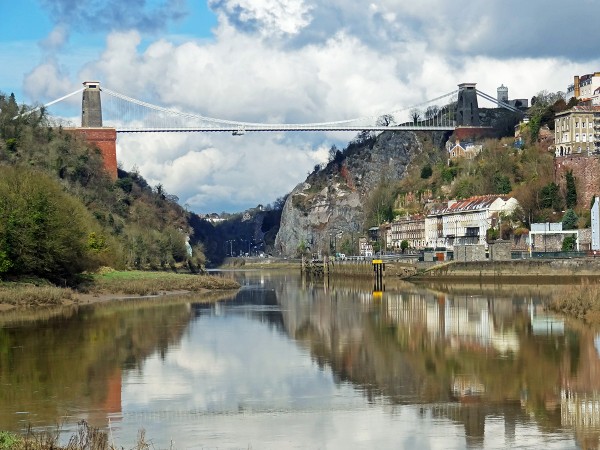 There have been two significant changes in prices for travel in Bristol. At the end of April, the toll on Brunel’s iconic Clifton Suspension Bridge doubled from 50p to £1 for a single crossing by car. The bridge over the Avon Gorge links North Somerset with the Clifton area of Bristol and is a major access route to the north west of the city. Avoiding the bridge could add around 2 miles or 8 minutes to a journey from North Somerset to Clifton.
There have been two significant changes in prices for travel in Bristol. At the end of April, the toll on Brunel’s iconic Clifton Suspension Bridge doubled from 50p to £1 for a single crossing by car. The bridge over the Avon Gorge links North Somerset with the Clifton area of Bristol and is a major access route to the north west of the city. Avoiding the bridge could add around 2 miles or 8 minutes to a journey from North Somerset to Clifton.
The justification given by the Clifton Suspension Bridge Trust for the increase was that extra revenue was needed for maintenance and repair. As Trust Chairman Chris Booy said, ‘The higher toll will enable the Trust to continue its £9 million 10-year vital repair and maintenance programme which aims to secure the bridge’s long-term future as a key traffic route, one of Bristol’s major tourist destinations and the icon of the city’.
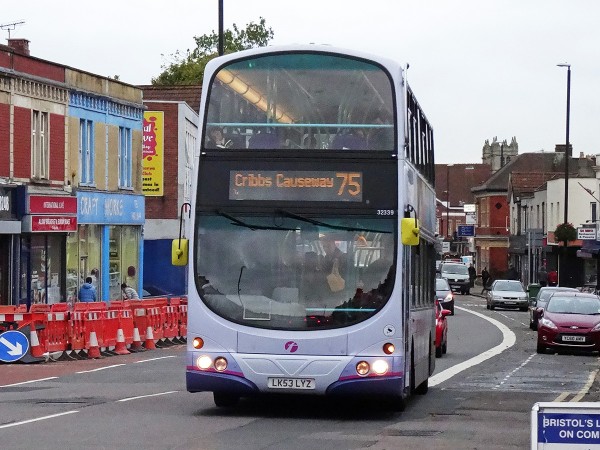 The other price change has been downwards. In November 2013, the First Group cut bus fares in Bristol and surrounding areas. Single fares for up to three miles were cut from £2.90 to £1.50; 30% discounts were introduced for those aged 16 to 21; half-price tickets were introduced for children from 5 to 15; and the two fare zones for £4 and £6 day tickets were substantially increased in size.
The other price change has been downwards. In November 2013, the First Group cut bus fares in Bristol and surrounding areas. Single fares for up to three miles were cut from £2.90 to £1.50; 30% discounts were introduced for those aged 16 to 21; half-price tickets were introduced for children from 5 to 15; and the two fare zones for £4 and £6 day tickets were substantially increased in size.
First hoped that the anticipated increase in passengers would lead to an increase in revenue. Evidence so far is that passenger numbers have increased, with journeys rising by some 15%. Part of this is due to other factors, such as extra bus services, new buses, free wifi and refurbished bus stops with larger shelters and seats. But the company attributes a 9% rise in passengers to the fare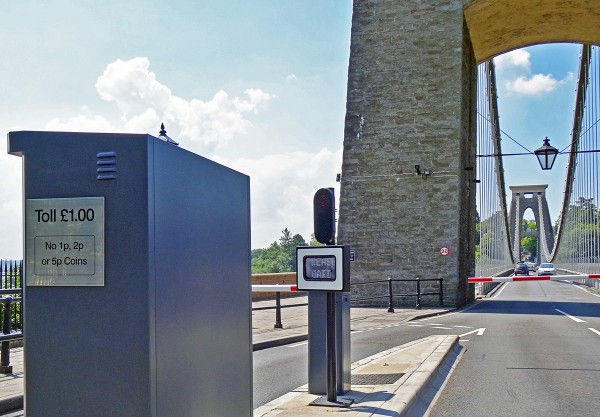 reductions. As far as revenue is concerned, indications from the company are that, after an initial fall, revenue has risen back to levels earned before the fare reduction.
reductions. As far as revenue is concerned, indications from the company are that, after an initial fall, revenue has risen back to levels earned before the fare reduction.
What are the longer-term implications for revenue and profit of these two decisions? This depends on the price elasticity of demand and on changes in costs. Read the articles and then consider the implications by having a go at answering the questions.
Clifton Suspension Bridge toll to rise from 50p to £1 BBC News (9/4/14)
Regular Users of Clifton Suspension Bridge will be Protected from the Increase in the Bridge Toll Clifton Suspension Bridge (9/4/14)
Clifton Suspension Bridge Review Decision Letter Department of Transport (24/3/14)
Clifton Suspension Bridge Trust: bridge toll review inspector’s report Department of Transport (8/4/14)
Clifton Suspension Bridge Toll Increase – Account of the May 2013 Public Inquiry The National Alliance Against Tolls (NAAT)
First Bus Bristol fare cuts sees passenger growth BBC News (6/6/14)
First gamble over cheaper bus fares pays off as passengers increase in Bristol The Bristol Post (6/6/14)
Bristol bus fares deal to extend to South Gloucestershire and North Somerset The Bristol Post, Gavin Thompson (12/6/14)
Questions
- What assumptions is the Clifton Suspension Bridge Trust making about the price elasticity of demand for bridge crossings?
- What determines the price elasticity for bridge crossings in general? Why is this likely to differ from one bridge to another?
- How is the long-term price elasticity of demand likely to differ from the short-term elasticity for Clifton Suspension Bridge crossings and what implications will this have for revenues, costs and profit?
- How is the price elasticity of demand for the bridge likely to vary from one user to another?
- How is offering substantial price reductions for multiple-crossing cards likely to affect revenue?
- What determines the price elasticity of demand for bus travel?
- What could a local council do to encourage people to use buses?
- How is the long-term price elasticity of demand for bus travel likely to differ from the short-term elasticity?
- In the long run, is First likely to see profits increase from its fare reduction policy? Explain what will determine this likelihood.
 Facebook has announced that it’s purchasing the messaging company WhatsApp. It is paying $19 billion in cash and shares, a sum that dwarfs other acquisitions of start-up companies in the app market. But what are the reasons for the acquisition and how will it affect users?
Facebook has announced that it’s purchasing the messaging company WhatsApp. It is paying $19 billion in cash and shares, a sum that dwarfs other acquisitions of start-up companies in the app market. But what are the reasons for the acquisition and how will it affect users?
WhatsApp was founded less than five years ago and has seen massive growth and now has some 450 million active users, 70% of whom use it daily. This compares with Twitter’s 240 million users. An average of one million new users are signing up to WhatsApp each day. As the Wall Street Journal article, linked below, states:
Even by the get-big-fast standards of Silicon Valley, WhatsApp’s story is remarkable. The company, founded in 2009 by Ukrainian Jan Koum and American Brian Acton, reached 450 million users faster than any company in history, wrote Jim Goetz, a partner at investor Sequoia Capital.
Facebook had fewer than 150 million users after its fourth year, one third that of WhatsApp in the same time period.
Yet, despite its large user base, WhatsApp has just 55 employees, including 32 engineers.
For the user, WhatsApp offers a cheap service (free for the first year and just a 99¢ annual fee thereafter).  There are no charges for sending or receiving text, pictures and videos. It operates on all mobile systems and carries no ads. It also offers privacy – once sent, messages are deleted from the company’s servers and are thus not available to government and other agencies trying to track people.
There are no charges for sending or receiving text, pictures and videos. It operates on all mobile systems and carries no ads. It also offers privacy – once sent, messages are deleted from the company’s servers and are thus not available to government and other agencies trying to track people.
With 450 million current active users, this means that revenue next year will not be much in excess of $450 million. Thus it would seem that unless Facebook changes WhatsApp’s charging system or allows advertising (which it says it won’t) or sees massive further growth, there must have been reasons other than simple extra revenue for the acquisition.
Other possible reasons are investigated in the videos and articles below. One is to restrict competition which threatens Facebook’s own share of the messaging market: competition that has seen young people move away from Facebook, which they see is becoming more of a social media platform for families and all generations, not just for the young.
Videos and podcasts
 Facebook pays billions for WhatsApp Messenger smartphone service Deutsche Welle, Manuel Özcerkes (19/2/14)
Facebook pays billions for WhatsApp Messenger smartphone service Deutsche Welle, Manuel Özcerkes (19/2/14)
 Facebook’s WhatsApp buy no bargain Reuters, Peter Thal Larsen (20/2/14)
Facebook’s WhatsApp buy no bargain Reuters, Peter Thal Larsen (20/2/14)
 Facebook Agrees To Buy WhatsApp For $19bn Sky News, Greg Milam (20/2/14)
Facebook Agrees To Buy WhatsApp For $19bn Sky News, Greg Milam (20/2/14)
 Facebook Eliminates Competitor With WhatsApp Bloomberg TV, Om Malik, David Kirkpatrick and Paul Kedrosky (20/2/14)
Facebook Eliminates Competitor With WhatsApp Bloomberg TV, Om Malik, David Kirkpatrick and Paul Kedrosky (20/2/14)
 Why WhatsApp Makes Perfect Sense for Facebook Bloomberg TV, Om Malik, David Kirkpatrick and Paul Kedrosky (20/2/14)
Why WhatsApp Makes Perfect Sense for Facebook Bloomberg TV, Om Malik, David Kirkpatrick and Paul Kedrosky (20/2/14)
 Facebook buying WhatsApp for $19bn BBC News, Mike Butcher (20/2/14)
Facebook buying WhatsApp for $19bn BBC News, Mike Butcher (20/2/14)
 Is Facebook’s acquisition of WhatsApp a desperate move? CNBC News, Rob Enderle (19/2/14)
Is Facebook’s acquisition of WhatsApp a desperate move? CNBC News, Rob Enderle (19/2/14)
 Facebook’s $19bn WhatsApp deal ‘unjustifiable’ BBC Today Programme, Larry Magid (20/2/14)
Facebook’s $19bn WhatsApp deal ‘unjustifiable’ BBC Today Programme, Larry Magid (20/2/14)
Articles
Facebook to buy WhatsApp for $19 billion in deal shocker ReutersGerry Shih and Sarah McBride (20/2/14)
Facebook to Pay $19 Billion for WhatsApp Wall Street Journal, Reed Albergotti, Douglas MacMillan and Evelyn M. Rusli (19/2/14)
Facebook to buy WhatsApp for $19bn The Telegraph, Katherine Rushton (19/2/14)
Facebook buys WhatsApp: Mark Zuckerberg explains why The Telegraph (19/2/14)
WhatsApp deal: for Mark Zuckerberg $19bn is cheap to nullify the threat posed by messaging application The Telegraph, Katherine Rushton (20/2/14)
Why did Facebook buy WhatsApp? TechRadar, Matt Swider (20/2/14)
What is WhatsApp? What has Facebook got for $19bn? The Guardian, Alex Hern (20/2/14)
Facebook to buy messaging app WhatsApp for $19bn BBC News (20/2/14)
WhatsApp – is it worth it? BBC News, Rory Cellan-Jones (20/2/14)
Facebook buys WhatsApp: what the analysts say The Telegraph (19/2/14)
Facebook ‘dead and buried’ as teenagers switch to WhatsApp and Snapchat – because they don’t want mum and dad to see their embarrassing pictures Mail Online (27/12/13)
Facebook and WhatsApp: Getting the messages The Economist (22/2/14)
Questions
- Are Facebook and WhatsApp substitutes or complements, or neither?
- What does Facebook stand to gain from the acquisition of WhatsApp? Is the deal a largely defensive one for Facebook?
- Has Facebook paid too much for WhatsApp? What information would help you answer this question?
- Would it be a good idea for Facebook to build in the WhatsApp functionality into the main Facebook platform or would it be better to keep the two products separate by keeping WhatsApp as a self contained company?
- What effects will the acquisition have on competition in the social media and messaging market? Is this good for the user?
- Will the deal attract the attention of Federal competition regulators in the USA? If so, why; if not, why not?
- What are the implications for Google and Twitter?
- Find out and explain what happened to the Facebook share price after the acquisition was announced.
 Prices of used fully electric cars (EVs) are falling in the UK, even though prices of used internal combustion engine (ICE) cars are rising. According to Auto Trader (see the first two articles below), in February 2023 the average price of used petrol cars rose by 3.3% compared with January and the price of used diesel cars rose by 1.4%. But the price of used EVs fell by 9.1%. This follows a fall of 2.1% in January.
Prices of used fully electric cars (EVs) are falling in the UK, even though prices of used internal combustion engine (ICE) cars are rising. According to Auto Trader (see the first two articles below), in February 2023 the average price of used petrol cars rose by 3.3% compared with January and the price of used diesel cars rose by 1.4%. But the price of used EVs fell by 9.1%. This follows a fall of 2.1% in January. On the demand side, many existing and potential EV owners worry about the charging infrastructure. The number of EVs has grown more rapidly than the number of charging points. In 2020 there was one charging point per 16 cars; by 2022 this had worsened to one per 30 cars. Also the distribution of charging points is patchy and there is a lack of rapid and ultra-rapid chargers. Increasingly, people have to queue for access to a charger and this can substantially delay a journey and could mean missed appointments. There were many pictures in the media around Christmas of long queues for chargers at service stations and supermarkets. Poor charging infrastructure can be more of a problem for second-hand EVs, which tend to have a smaller range.
On the demand side, many existing and potential EV owners worry about the charging infrastructure. The number of EVs has grown more rapidly than the number of charging points. In 2020 there was one charging point per 16 cars; by 2022 this had worsened to one per 30 cars. Also the distribution of charging points is patchy and there is a lack of rapid and ultra-rapid chargers. Increasingly, people have to queue for access to a charger and this can substantially delay a journey and could mean missed appointments. There were many pictures in the media around Christmas of long queues for chargers at service stations and supermarkets. Poor charging infrastructure can be more of a problem for second-hand EVs, which tend to have a smaller range. More recently, the price of oil has fallen and with it the price of petrol and diesel. But electricity prices are set to rise in April as government subsidies cease. The cost advantage of running an electric car is likely to disappear, or at least substantially decline.
More recently, the price of oil has fallen and with it the price of petrol and diesel. But electricity prices are set to rise in April as government subsidies cease. The cost advantage of running an electric car is likely to disappear, or at least substantially decline. Throughout the pandemic, the fight against COVID-19 has often been framed in terms of striking a balance between the health of the public and the health of the economy. This leads to the assumption that a trade-off must exist between these two objectives. Countries, therefore, have to decide between lives and livelihoods. However, one year on since lockdowns swept the globe the evidence suggests that the trade-off between sacrificing lives and sacrificing the economy is not necessarily clear cut.
Throughout the pandemic, the fight against COVID-19 has often been framed in terms of striking a balance between the health of the public and the health of the economy. This leads to the assumption that a trade-off must exist between these two objectives. Countries, therefore, have to decide between lives and livelihoods. However, one year on since lockdowns swept the globe the evidence suggests that the trade-off between sacrificing lives and sacrificing the economy is not necessarily clear cut. It could be argued, therefore, that in the short run these interventions create a ‘health–wealth trade-off’. The lockdown restrictions save lives by preventing transmission, but they came at the cost of lost output, income and therefore GDP. This would also imply that the trade-off works in reverse when the lockdown restrictions are eased. As measures are relaxed, the economy can begin to recover but at the cost of an increased threat of the virus spreading again.
It could be argued, therefore, that in the short run these interventions create a ‘health–wealth trade-off’. The lockdown restrictions save lives by preventing transmission, but they came at the cost of lost output, income and therefore GDP. This would also imply that the trade-off works in reverse when the lockdown restrictions are eased. As measures are relaxed, the economy can begin to recover but at the cost of an increased threat of the virus spreading again.  The UK was the hardest hit of similar countries on both measures within the G7 group of industrialised countries. The shape of the recession in the UK from the pandemic and lockdowns was extraordinary and historic. However, it was also unique as there was a very sharp fall followed by a rapid rebound. Over 2020, GDP saw the largest hit in three centuries; larger than any single year of the Great Wars or the 1920s Depression.
The UK was the hardest hit of similar countries on both measures within the G7 group of industrialised countries. The shape of the recession in the UK from the pandemic and lockdowns was extraordinary and historic. However, it was also unique as there was a very sharp fall followed by a rapid rebound. Over 2020, GDP saw the largest hit in three centuries; larger than any single year of the Great Wars or the 1920s Depression. Given the arguments against the existence of the trade-off, it could be argued that in order to limit the economic damage caused by the pandemic, the focus needs to start and end with controlling the spread of the virus. Experiments that have been conducted across the world definitively show that no country can prevent the economic damage without first addressing the pandemic that causes it. Those countries that acted swiftly in implementing harsh measures to control the virus, are now reopening in stages and their economies are growing. Countries such as China, Australia, New Zealand, Iceland, and Singapore, which all invested primarily in swift coronavirus suppression, have effectively eliminated the virus and are seeing their economies begin to grow again.
Given the arguments against the existence of the trade-off, it could be argued that in order to limit the economic damage caused by the pandemic, the focus needs to start and end with controlling the spread of the virus. Experiments that have been conducted across the world definitively show that no country can prevent the economic damage without first addressing the pandemic that causes it. Those countries that acted swiftly in implementing harsh measures to control the virus, are now reopening in stages and their economies are growing. Countries such as China, Australia, New Zealand, Iceland, and Singapore, which all invested primarily in swift coronavirus suppression, have effectively eliminated the virus and are seeing their economies begin to grow again.  It’s been a while since I last blogged about labour markets and, in particular, about the effect of automation on wages and employment. My most recent post on this topic was on the 14th of April 2018 and it was mostly a reflection on some interesting findings that had been reported by Acemoglu et al (2017). More specifically, Acemoglu and Restrepo (2017) developed a theoretical framework to evaluate the effect of AI on employment and wages. They concluded that the effect was negative and potentially sizeable (for a more detailed discussion
It’s been a while since I last blogged about labour markets and, in particular, about the effect of automation on wages and employment. My most recent post on this topic was on the 14th of April 2018 and it was mostly a reflection on some interesting findings that had been reported by Acemoglu et al (2017). More specifically, Acemoglu and Restrepo (2017) developed a theoretical framework to evaluate the effect of AI on employment and wages. They concluded that the effect was negative and potentially sizeable (for a more detailed discussion 





